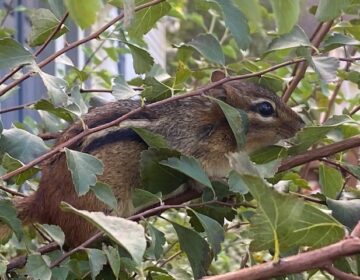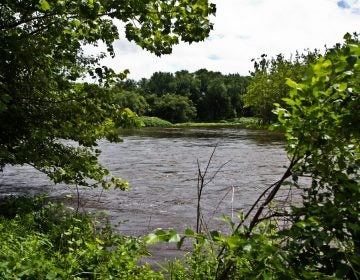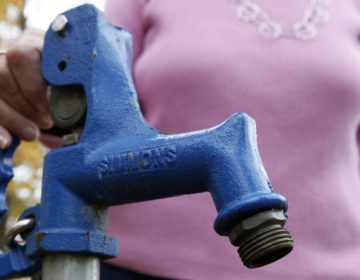Wading through muddy wetlands, N.J. conservationists seek to find — and protect — endangered bog turtles
Conservationists from the New Jersey Audubon Society have worked for nearly a decade to track and conserve the endangered bog turtle.
On a mild but windy day, along the Upper Salem River in South Jersey, a small group of conservationists trekked in their waders through muddy ground to search for endangered bog turtles.
They’d like their location to remain confidential — to prevent poachers from capturing and selling the turtles as pets or food. The black market turtle trade is one of the reasons why the bog turtle is federally threatened and state endangered, along with depleting habitat caused by land development, pollution, and invasive species.
The conservationists, from the New Jersey Audubon Society, have worked for nearly a decade to track and conserve the bog turtle. The four-inch creature, identifiable by the orange patch on its neck, is North America’s smallest turtle. Spotting the turtles can be grueling work, as the conservation team trudges through mucky soil, sometimes up to their hips, in floodplains.
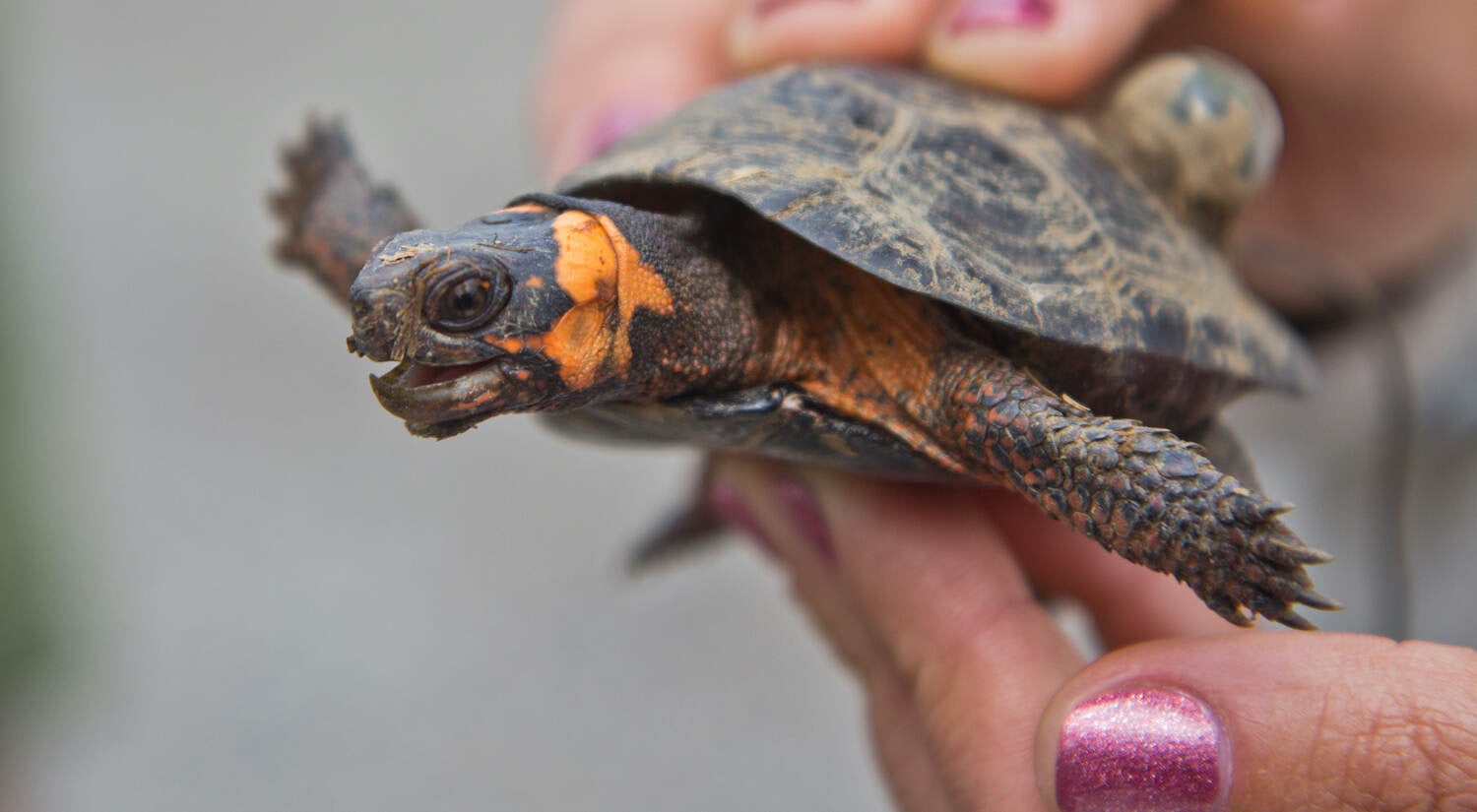
“A lot of people will refer to this as, ‘It’s like quicksand.’ You can get stuck pretty easily, and sink very, very deep,” said Kristen Meistrell, project director of New Jersey Audubon stewardship.
Until this year, no new bog turtles had been found on this particular property since 2003. Two months ago, the New Jersey Audubon team found two young turtles ages 4 and 8 — a sign that their efforts to restore the turtles’ habitat and make the animals more likely to reproduce are paying off.
Meistrell said she hopes more progress can be achieved, thanks to $247,200 in federal funds that the New Jersey Audubon was awarded in 2021 from the Delaware Watershed Conservation Fund. The grant is supporting the group’s efforts to restore and connect 60 acres of freshwater wetlands and to support uplands.
“This habitat restoration and population recovery takes decades. So, it is really exciting to finally see that things are improving. And, we hope that it just continues to get even better,” Meistrell said.
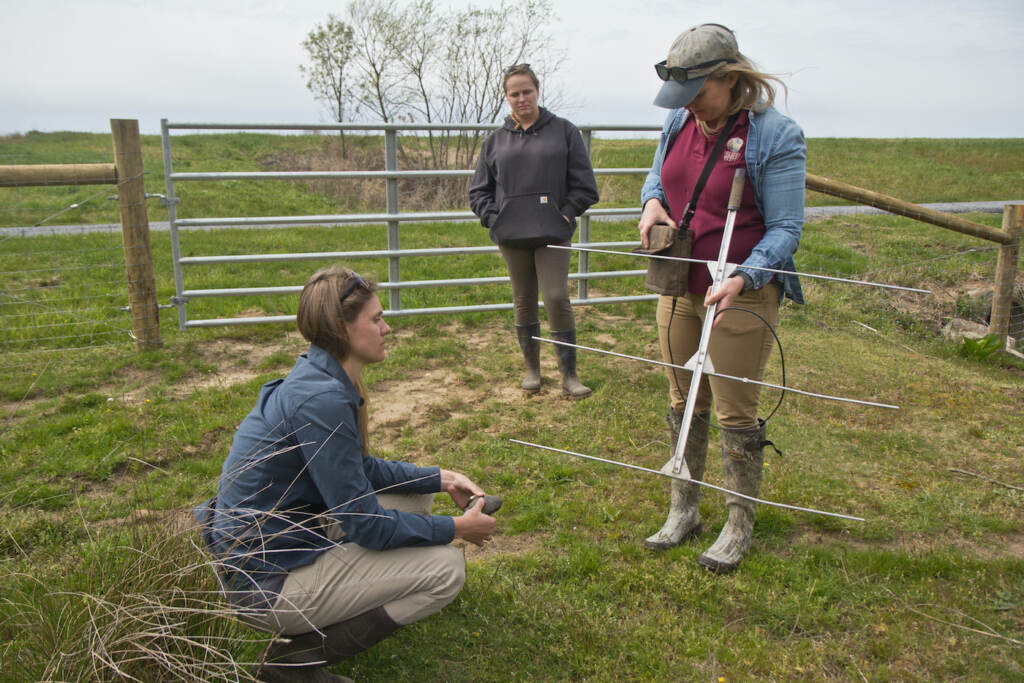
She called the bog turtle a “cryptic species,” often prone to hiding during her team’s surveying.
“Those days can be long, they can be uncomfortable, it could be hot, buggy. And when you’re not finding them, it can get a little discouraging,” Meistrell said. “But it is those days when you find new ones, or you recapture old turtles that have been marked, that just kind of validates everything.”
The ‘poster child’ of the watershed
The bog turtle population has declined by nearly 50% in the U.S. over the last two decades, according to some estimates from wildlife organizations. In 1997, the U.S. Fish and Wildlife Service added the turtle to its list of federally-threatened species. Once abundant in New Jersey, the bog turtle is now listed as endangered in the state, found only in its southern and northwestern areas.
Bog turtles require open wetlands with clean water, sunlight, soil, hummocks for nesting and basking, and shrubby areas to protect from the cold. But invasive species, pollution, and development have compromised that habitat, and have prevented the turtles from moving to more suitable locations.
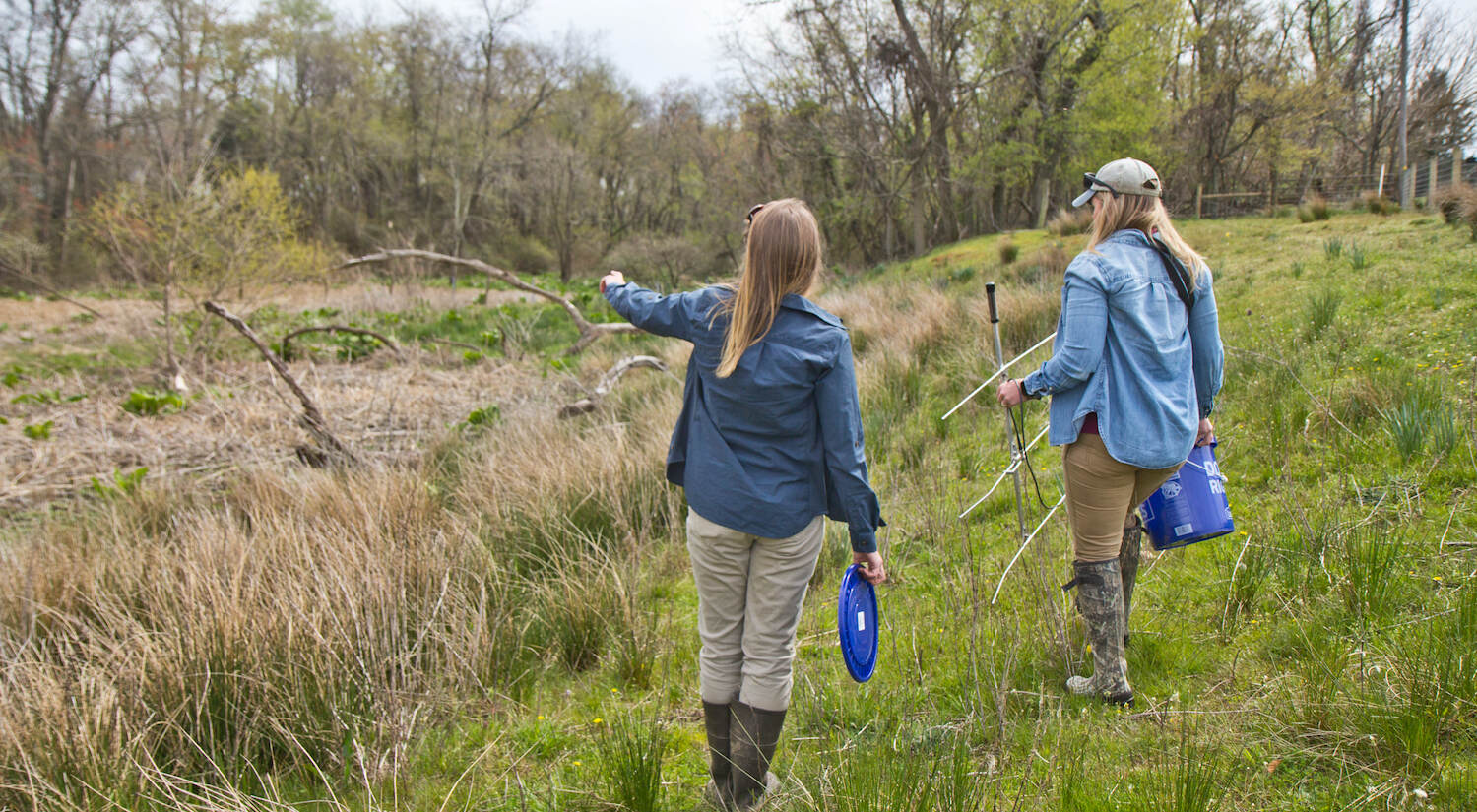
It can also be challenging for two turtles to find each other to mate when populations are diminishing. And even if a female does find a mate, more problems can arise: She won’t produce many eggs, and sometimes they don’t hatch. The eggs are also vulnerable to being eaten by animals like feral cats, raccoons, and skunks.
Because bog turtles rely on the watershed, their decline implies the watershed isn’t as healthy as it should be. Protecting watersheds is crucial, conservationists say, because they provide drinking water to some residents and offer benefits like flood mitigation. New Jersey Audubon’s work not only helps bog turtles but improves water quality, as new wetlands are being created within the headwaters of the Salem River that will filter water before it enters the Delaware River.
“If they’re declining, that means that our watersheds are declining, and habitat for other species are declining. So it’s sort of the poster child, so to speak, of good, healthy, functioning wetlands and watersheds,” Meistrell said.
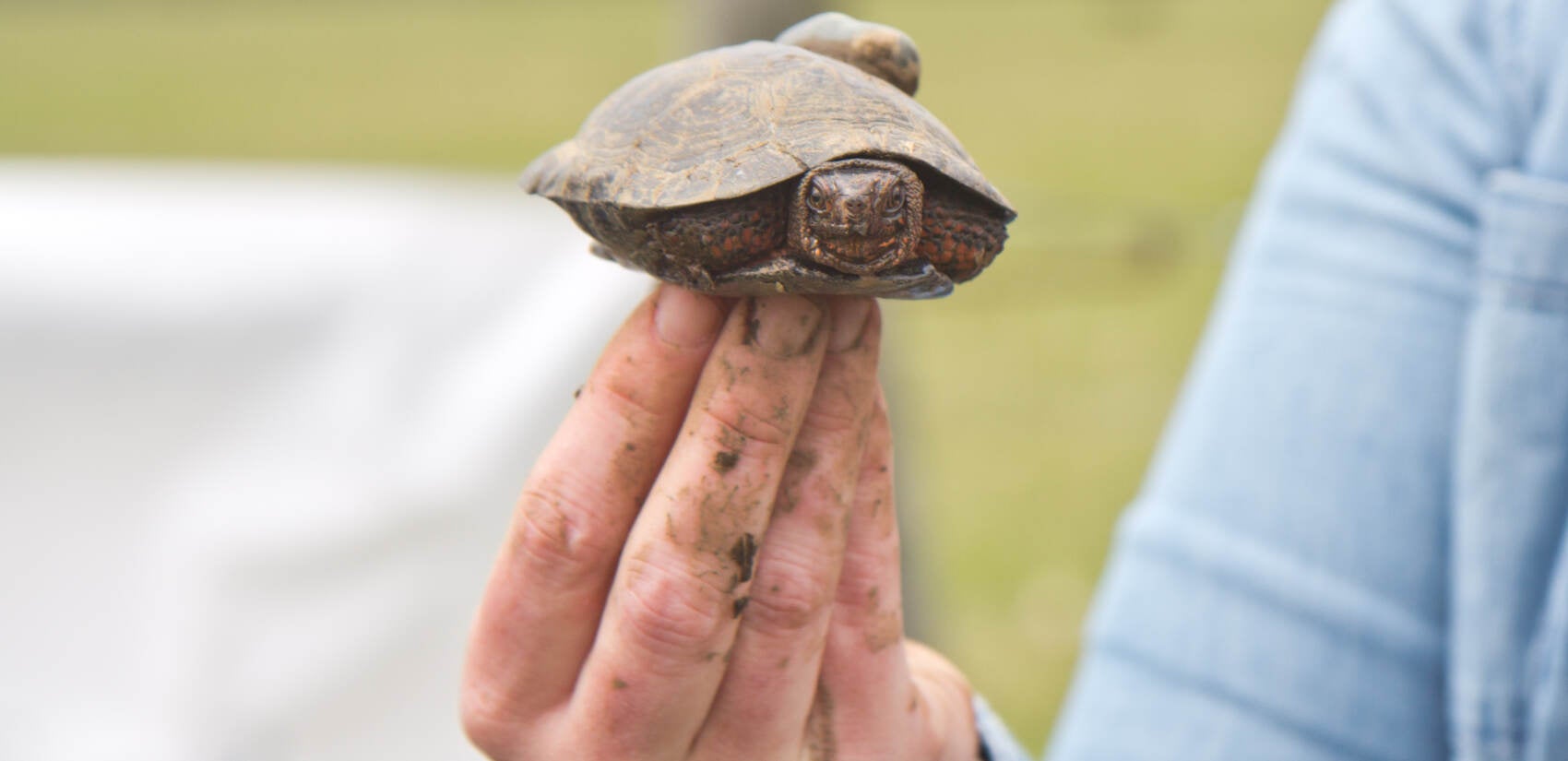
Munching sheep: A bog turtle’s best friend
New Jersey Audubon’s bog turtle habitat conservation efforts began on state-owned property in 2013. The work has involved controlling invasive species, as well as planting native trees, shrubs, and grasses on agricultural fields. The team has also removed tile drains and constructed a step pool to slow down water and create more wetland habitat. Bog turtles on that site have increased from four to 11 since 2011.
More recently, the group has expanded its efforts to private land, working with farmers and other landowners to address issues that affect bog turtles. So far, they’ve found eight turtles across three private sites.
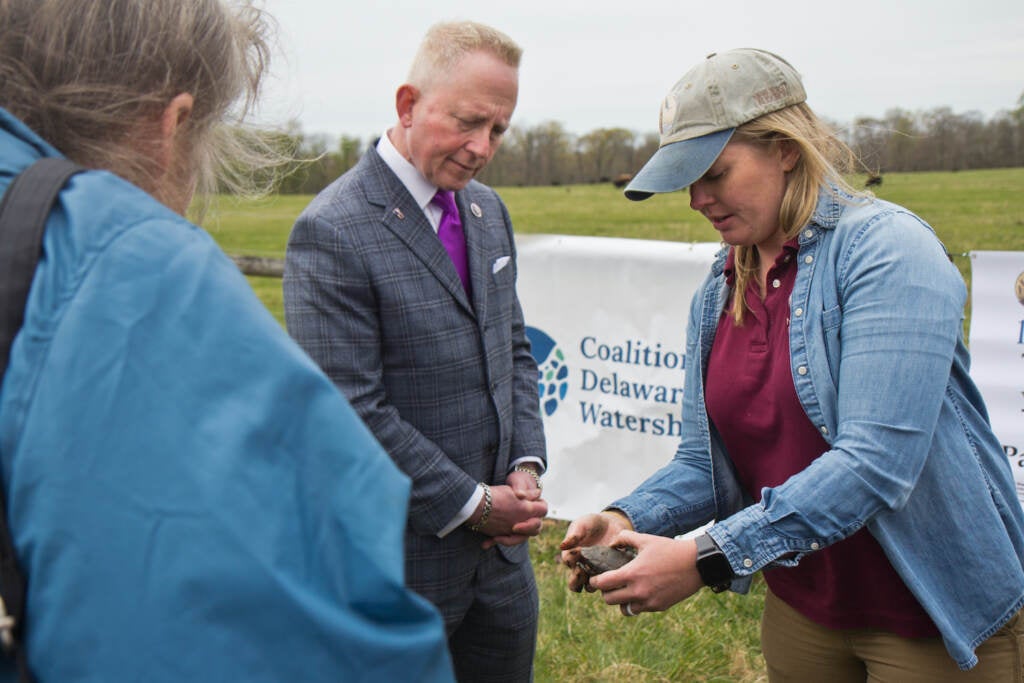
stewardship project director at New Jersey Audubon, on April 21, 2022. (Kimberly Paynter/WHYY)
Bog turtles are closely tied with agricultural history, said state biologist Betsy McShane of the U.S. Department of Agriculture’s Natural Resources Conservation Service in New Jersey. The species live in streams and wetlands, which historically were grazed by cattle, reducing woody vegetation growth and creating sunny openings for bog turtle nesting. However, grazing operations have become limited in New Jersey, meaning there are fewer opportunities for turtle nesting, McShane said.
Jane, whose last name is being withheld to prevent poachers from finding turtles on her property, is one of the landowners with whom New Jersey Audubon has partnered. She and her husband have agreed to give their 15 adult sheep a lawn mowing job to ensure an open habitat for the bog turtles, free of woody plants.
During a public event last week, Jane said she was excited to see the bog turtles from her land for the first time.
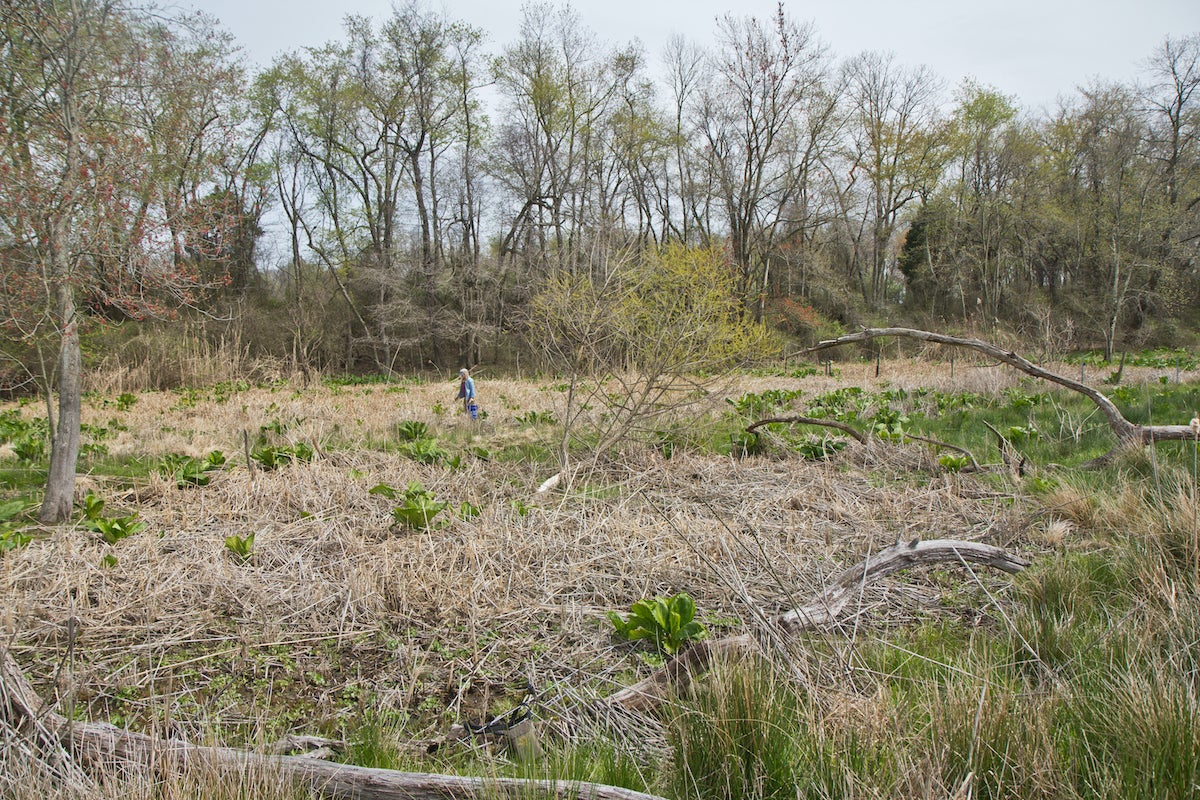
“Everybody wants to see a bog turtle, because you can’t see them unless you go down in the mud … So I’m going to get some pictures of my two babies,” she said. “I’m just glad they found three of them, and that means they’re growing, they’re getting bigger.”
If the turtles are big enough, the conservationists attach a transmitter to their shells, which helps track their movements and confirms whether they’re using restored areas — the ultimate success. Finding turtles age 8 or younger means there is appropriate habitat for bog turtles to reproduce.
The USDA’s Natural Resources Conservation Service in New Jersey also is allocating $710,000 in federal farm bill dollars to fund bog turtle habitat restoration on privately-owned land along the Upper Salem River Watershed.

The agency’s Regional Conservation Partnership Program has worked with private landowners for several decades, but this is the first time it is dedicating funding specifically for bog turtles.
The funding primarily covers the costs of restoration work. However, if the state purchases an easement — taking it out of agricultural production to restore it for habitat purposes — landowners are paid for the value of that land.
McShane, of the agriculture agency, said she hopes getting landowners involved in the conservation efforts will have long-term benefits for bog turtles.
“Part of our goal is to get the landowners interested in managing the habitat to benefit the bog turtles,” McShane said, “and continue to do the management into the future.”
___
Landowners interested in becoming involved in the project can fill out an application for New Jersey Audubon’s Health Land and Waters grant.

Saturdays just got more interesting.
WHYY is your source for fact-based, in-depth journalism and information. As a nonprofit organization, we rely on financial support from readers like you. Please give today.



